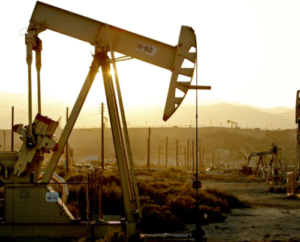$VSAT $XOM $TSLA
#IoT #EnergySector #OilAndGas #RenewableEnergy #Viasat #TechInvestments #IndustrialImpact #GreenEnergy #IoT2024 #InvestmentReport #FossilFuels #EnergyTransition
Viasat, Inc. has revealed its “State of Industrial IoT in 2024” report, shedding light on the increasing prominence of the energy sector’s role in driving investment in the Internet of Things (IoT). Particularly, the report underlines the oil and gas segment as maintaining a consistent level of investment in IoT, with figures totaling $3.2 million since 2021. While this suggests a relatively flat trajectory in terms of technological upgrades, it also reflects the conservative nature of the oil and gas industry, which has historically been slower to adopt new technological solutions compared to other sectors. However, the advent of IoT applications, such as predictive maintenance, automated monitoring, and real-time analytics, highlights the untapped potential IoT could unlock if further embraced by this sector. Stakeholders in oil companies like $XOM might look for improved operational efficiency and cost-cutting measures through such investments, potentially influencing future financial performance.
On the other hand, the renewables sector is experiencing a sharper rise in IoT investment, now reaching $3.5 million. As green energy becomes an increasingly favored segment in global energy markets, companies involved in solar, wind, and other renewable sources are turning to IoT to optimize output and efficiency. In renewable projects, IoT technologies are used to manage smart grids, enhance data gathering from solar panels, and maintain wind turbines remotely. The trend suggests that as government regulations favor environmental initiatives, companies heavily invested in renewable infrastructures, such as $TSLA (due to their solar business), may benefit from IoT integration, allowing them to capitalize on growing energy demands while staying ahead of efficiency curves. The strategic implementation of IoT tools could become a differentiating factor in scaling operations cost-effectively and responding to the energy transition toward greener solutions.
The wider market understanding sees IoT as a key driver for the digital transformation in energy, manufacturing, and logistics industries, with applications that could save significant operational costs while boosting revenue. Viasat’s report highlights that energy-focused IoT represents not just an evolution in hardware but in data. Investors with access to such data through IoT-enabled devices can make more informed decisions, possibly forecasting and influencing commodities markets or renewable energy credits. For factoring this insight into broader market strategies, investors weighing in on energy stocks or ETFs focused on energy technology could see long-term potential gains as the IoT ecosystem strengthens, attributing value to the digital infrastructure supporting this sector.
The broader IoT market is expected to experience strong growth in the upcoming years, extending beyond energy into agriculture, healthcare, and manufacturing. As more industries look to increase their efficiency through IoT, the companies at the forefront of technological innovation, such as $VSAT, will likely see expanding market opportunities. With the energy sector already utilizing IoT for improving logistics, safety, and operations, increasing investment in both renewables and fossil fuels signals a transformative future for the industry which has profound implications for investors, policy-makers, and tech innovators alike.





Comments are closed.